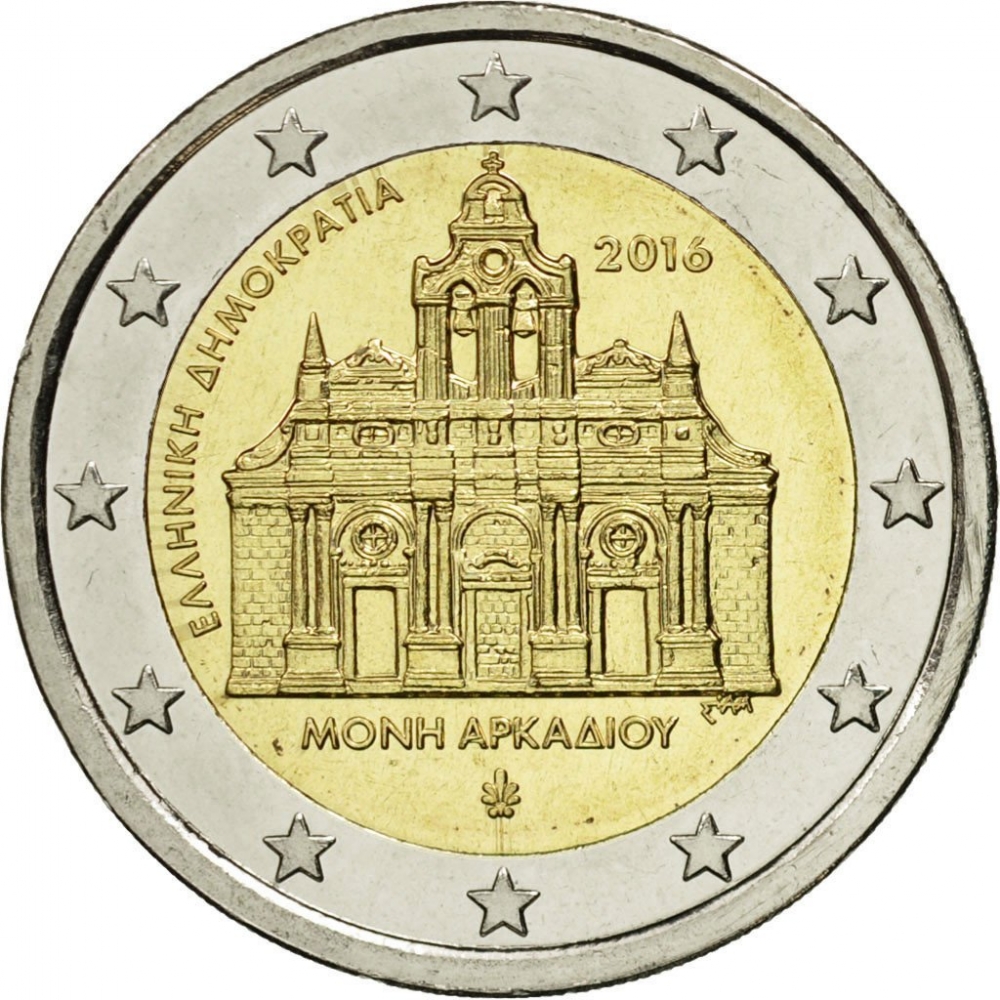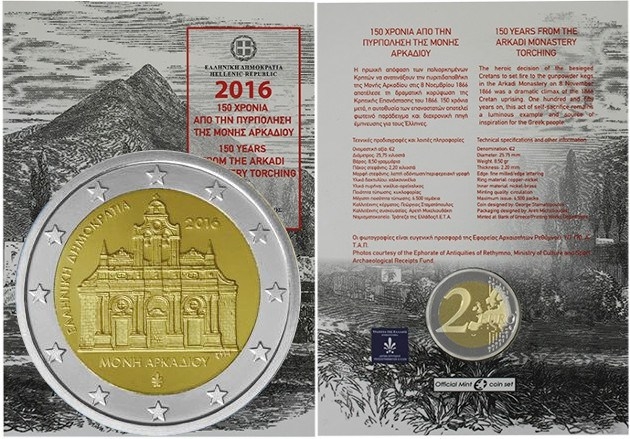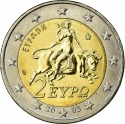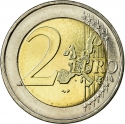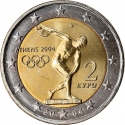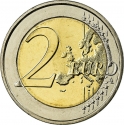You are about to finish your registration. Please check your mailbox (including spam folder). There should be a letter with a confirmation link. Check setting to make sure that your e-mail address is correct.
Send letter againDescription
The Arkadi Monastery is an Eastern Orthodox monastery, situated on a fertile plateau 23 km (14 mi) to the southeast of Rethymnon on the island of Crete in Greece. The Arkadi Monastery played an active role in the Cretan resistance of Ottoman rule during the Cretan revolt of 1866. 943 Greeks, mostly women and children, sought refuge in the monastery. After three days of battle and under orders from the hegumen (abbot) of the monastery, the Cretans blew up barrels of gunpowder, choosing to sacrifice themselves rather than surrender. The monastery became a national sanctuary in honor of the Cretan resistance. The explosion did not end the Cretan insurrection, but instead attracted the attention of the rest of the world.
Obverse

|
Depicts the Arkadi Monastery. The inscriptions in Grek "Arkadi Monastery" and the mintmark (stylized acanthus leaf, Athens) below and issuing country along the inner edge at left, the date on the upper right. The monogram of the engraver on the lower right (ΣΤΑΜ, Georgios Stamatopoulos). The twelve stars of the European Union surround the design on the outer ring. ΕΛΛΗΝΙΚΗ ΔΗΜΟΚΡΑΤΙΑ |
|---|---|
Reverse

|
A geographical map of Western Europe spans the outer ring and inner core on the right side of the coin. The inscription 2 EURO is superimposed over the map of Europe, with the numeral “2” located in an open field representing the eastern Atlantic Ocean. 2 EURO |
| Edge |
HELLENIC REPUBLIC in Greek ΕΛΛΗΝΙΚΗ ΔΗΜΟΚΡΑΤΙΑ ★ |
Characteristics
| Type | Commemorative Issue (Circulating) |
| Material | Bi-Metallic |
| Ring | Cupronickel |
| Center | - |
| Weight | 8.5 g |
| Diameter | 25.75 mm |
| Thickness | 2.2 mm |
| Shape |
|
| Alignment | Medal |
| Mint |
Bank of Greece
|
